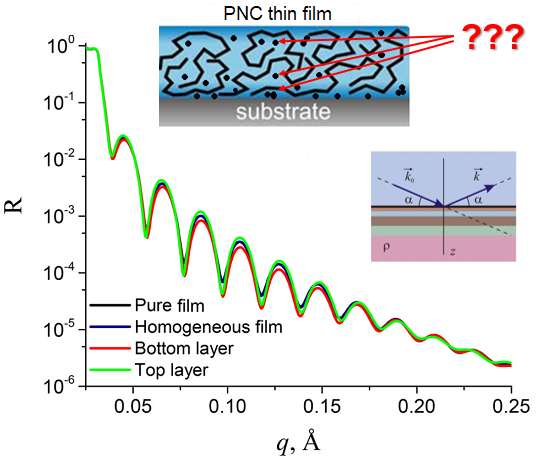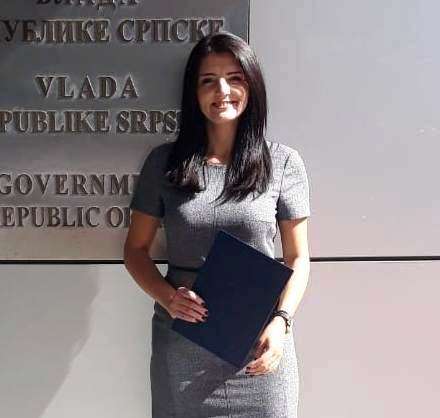Polymer nanocomposites (PNCs) present a vast field of research for condensed matter physics specialists. Numerous perspective applications are revealed. Many properties of the obtained materials strongly depend on the dispersion state of nanoparticles (NPs) inside the polymer matrix. Reflectometry is one of the useful techniques for investigating the NPs structural organization inside thin films of different PNCs. In this project a student will learn the basics of neutron/X-ray reflectometry method and further perform some modeling and fitting of the experimental curves. The goal is to clarify how well can the method distinguish NPs organization inside the film. Given enough time, we will proceed to working with some of the new experimental results obtained at the FLNP for thin films of polystyrene-fullerene nanocomposite.
Tasks
1. Learn the basics of the neutron/X-ray reflectometry techniques.
2. Learn of the model PNC thin film for the method.
3. Propose different models for NPs organization in the film.
4. Understand how to model reflectivity curves in the Motofit package of Igor Pro.
5. Model respective curves for different content of NPs in the film, introduce experimental error.
6. Fit the obtained curve without a priori knowledge of film structure.
7. Analyze obtained results, draw conclusions on the methods ability to distinguish NPs structural organization.
Preliminary schedule by topics/tasks
The project will last through the whole Wave 4. The work schedule will be adjusted for the progress of the student’s research.
Required skills
1. Basic knowledge of the condensed matter physics.
2. Basic computer skills.
Acquired skills and experience
1. Neutron/X-ray scattering basics.
2. Basic understanding of the reflectometry method.
3. Basic knowledge about PNCs / PNC thin films.
4. Modeling and fitting of the reflectivity curves using motofit.
5. Presenting the obtained results.
Recommended literature
1. Neutron reflectometry:
a. Penfold, J.; Thomas, R. K. The Application of the Specular Reflection of Neutrons to the Study of Surfaces and Interfaces. J. Phys. Condens. Matter, 1990, 2 (6), 1369–1412. https://doi.org/10.1088/0953-8984/2/6/001.
b. R. Pynn Lectures on neutron scattering, Lecture 3: Surface reflection.
c. J.R.P. Webster, Introduction to neutron reflectivity, ISIS neutron scattering training course.
d. G. Fragneto (ILL), Introduction to neutron reflectometry.
2. Motofit manual (http://motofit.sourceforge.net/manual/motofit/motofitmanual.pdf)
3. Avdeev, M. V.; Bodnarchuk, V. I.; Petrenko, V. I.; Gapon, I. V.; Tomchuk, O. V.; Nagorny, A. V.; Ulyanov, V. A.; Bulavin, L. A.; Aksenov, V. L. Neutron Time-of-Flight Reflectometer GRAINS with Horizontal Sample Plane at the IBR-2 Reactor: Possibilities and Prospects. Crystallogr. Reports, 2017, 62 (6), 1002–1008. https://doi.org/10.1134/S1063774517060025.
4. PNCs reviews:
a. Mackay, M. E.; Tuteja, A.; Duxbury, P. M.; Hawker, C. J.; Van Horn, B.; Guan, Z.; Chen, G.; Krishnan, R. S. General Strategies for Nanoparticle Dispersion. Science (80-. )., 2006, 311 (5768), 1740–1743. https://doi.org/10.1126/science.1122225.
b. Russell, T. P.; Chai, Y. 50th Anniversary Perspective: Putting the Squeeze on Polymers: A Perspective on Polymer Thin Films and Interfaces. Macromolecules, 2017, 50 (12), 4597–4609. https://doi.org/10.1021/acs.macromol.7b00418.




